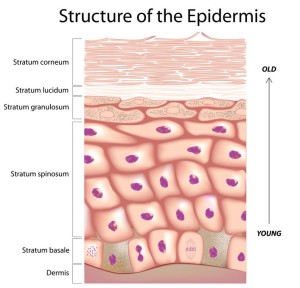 In recent years, vitamin D has become one of the most discussed nutrients in the health community. It is also one of the most complicated and controversial of the nutrients, especially when it comes to supplementation and plant-based diets.
In recent years, vitamin D has become one of the most discussed nutrients in the health community. It is also one of the most complicated and controversial of the nutrients, especially when it comes to supplementation and plant-based diets.
There are two supplemental forms of vitamin D: vitamin D2 and vitamin D3. Vitamin D2, also known as ergocalciferol, has historically been thought of as the vegan form of vitamin D. On the other hand, vitamin D3, also known as cholecalciferol, has historically been considered a non-vegan form of vitamin D. Vitamin D2 supplements have traditionally been made from mushrooms. Exposure of ergosterol in these fungi to UVB light rays (ultraviolet B spectrum rays of the sun) leads to the production of vitamin D2. Conversely, vitamin D3 supplements have been made from lanolin found in sheep’s wool. Exposure of 7-dehydrocholesterol in lanolin to UVB rays leads to the formation of vitamin D3, similar to how vitamin D3 is produced in our skin.
 Research is mixed on which supplement is more reliably effective at raising our vitamin D levels. Much of this research has indicated that the D3 form of vitamin D is more effective at raising blood levels of vitamin D than D2, however some indicates the two can be equivalent. Many vegans have expressed concern to us about this, since they have found their vitamin D2 supplements are not giving them the results they are seeking. Consequently, some have considered using a D3 supplement to raise their vitamin D to desired levels. Where does this leave someone who wants to stay true to their vegan lifestyle and ethics? Fortunately in recent years, several supplement companies have formulated supplements with vitamin D3 sourced from lichen. What is lichen? It is an organism composed of some type of fungus and algae, or cyanobacteria in some cases, living together symbiotically. Lichen is often found growing on tree branches and rocks and can have a pale green to gray or mushroom color, as well as others. Does this mean that we should eat lichen to get our vitamin D? No, many species of lichen are not edible, so it would be best to stick with a supplement. But the good news is that a vegan vitamin D3 supplement does now exist and various supplement companies are offering it as an alternative to lanolin-sourced D3!
Research is mixed on which supplement is more reliably effective at raising our vitamin D levels. Much of this research has indicated that the D3 form of vitamin D is more effective at raising blood levels of vitamin D than D2, however some indicates the two can be equivalent. Many vegans have expressed concern to us about this, since they have found their vitamin D2 supplements are not giving them the results they are seeking. Consequently, some have considered using a D3 supplement to raise their vitamin D to desired levels. Where does this leave someone who wants to stay true to their vegan lifestyle and ethics? Fortunately in recent years, several supplement companies have formulated supplements with vitamin D3 sourced from lichen. What is lichen? It is an organism composed of some type of fungus and algae, or cyanobacteria in some cases, living together symbiotically. Lichen is often found growing on tree branches and rocks and can have a pale green to gray or mushroom color, as well as others. Does this mean that we should eat lichen to get our vitamin D? No, many species of lichen are not edible, so it would be best to stick with a supplement. But the good news is that a vegan vitamin D3 supplement does now exist and various supplement companies are offering it as an alternative to lanolin-sourced D3!
Interested in taking your knowledge to the next level? We cover this topic and so much more in our online Mastering Raw Food Nutrition and Educator Course. For more class details, click here.
One of the best ways to keep in touch with us is to join our email list. You’ll receive a free copy of Our Top 12 Strategies for Long Term Success on A Raw Plant-Based Diet eBook along with regular information about raw food and plant-based diets and periodic promotions for our classes, events, and other offerings!
Three common vitamin D questions answered: Is vitamin D deficiency just for vegans, how is vitamin D made in our skin, and what is the best test for vitamin D?
 Is vitamin D deficiency just for vegans?
Is vitamin D deficiency just for vegans?
Many times I have heard people say that they stopped eating a plant-based vegan diet because they tested low in vitamin D. The fact is that vitamin D deficiency is not solely an issue for vegans, vegetarians, and raw foodists. A 2011 study estimated the prevalence of vitamin D deficiency in the US population at 42 percent on average and in some segments of the population this prevalence is as high as 82 percent. The researchers in this study defined vitamin D deficiency as a blood level of vitamin D less than or equal to 20 ng/ml. Opinions on this number differ. For example, various clinicians and the Vitamin D Council define vitamin D deficiency as less than or equal to 30 ng/ml, so these sources may see the estimated average vitamin D deficiency prevalence in the US as higher than 42%.
According to a Vegetarian Times survey, about 3% of the US population follows a vegetarian diet and approximately half of these people identify as vegan. As we can see from the stats mentioned above, vitamin D deficiency is clearly not just a concern for vegans, vegetarians, and raw food enthusiasts. Vitamin D status is an important consideration for everyone regardless of diet.
How is vitamin D made in our skin?
When we are outside and we have bare skin exposed to the sun, ultraviolet B spectrum rays interact with 7-dehydrocholesterol in our skin to produce cholecalciferol, also known as vitamin D3. After vitamin D3 is formed, it travels via the bloodstream down to the liver where it is converted to 25-hydroxycholecalciferol, also known as 25-hydroxyvitamin D3. 25-hydroxycholecalciferol then travels via the bloodstream down to the kidneys, where it is transformed to 1,25-dihydroxycholecalciferol, also known as 1,25-dihydroxyvitamin D3, which is considered to be the activated form of vitamin D.
Vitamin D3 is produced in an area of the skin called the epidermis. The epidermis has five layers, the first of which we can see, called the stratum corneum. Vitamin D3 is produced further down in levels 4 and 5 of the epidermis called the stratum spinosum and the stratum basale, after which vitamin D3 travels through the bloodstream to the liver for conversion.
Many people spend time in the sun but still find that they test low in vitamin D. There are some factors that can inhibit vitamin D production in the skin, specifically air pollution, skin type, time of day, age, sunscreen usage, latitude, time of year, and other factors. For example, air pollution in significant amounts can potentially obscure the rays of the sun, inhibiting skin production of vitamin D.
Sunscreen use at SPF 8 and above may affect the production of vitamin D in the skin as can latitude and season. For example, the ability of one’s skin to make vitamin D year round is consistent at 35 degrees north latitude and below in the northern hemisphere*, or 35 degrees south latitude and above in the southern hemisphere*. In the United States, 35 degrees north is Los Angeles on the west coast and the border of North and South Carolina on the east coast. The ability of one’s skin to make vitamin D in the winter will be reduced or eliminated for someone living above 35 degrees north and below 35 degrees south. Simply stated, people who live in northern parts of the United States have been found not to produce vitamin D in their skin during the winter months.
How do we determine our vitamin D status?
The best way to know is to get a blood test, and the test currently considered to be the best measurement of vitamin D status is known as the 25-hydroxycholecalciferol, 25-hydroxyvitamin D3, or 25-OH D3 test.
Would you like to learn how much vitamin D is made in the skin per unit time or are you interested in taking your general vitamin D and nutrition knowledge to the next level? We cover this topic and so much more in our online Mastering Raw Food Nutrition and Educator Course. Mastering Raw Food Nutrition is the updated and expanded version of our popular Science of Raw Food Nutrition classes. For more class details, click here.
Additionally, our book The Raw Food Nutrition Handbook: An Essential Guide to Understanding Raw Food Diets addresses many hot topics in raw food nutrition such as vitamin D, essential fats, protein, nutrient content of raw food diets, food combining, enzymes, hydration, vitamins, minerals, and many more. We value education on these important topics and are happy to finally bring this book to you. The book is available on Amazon and other online booksellers.
One of the best ways to keep in touch with us is to join our email list. You’ll receive a free copy of Our Top 12 Strategies for Long Term Success on A Raw Plant-Based Diet eBook along with regular information about raw food and plant-based diets and periodic promotions for our classes, events, and other offerings!
References:
Dina K, Dina R. The Raw Food Nutrition Handbook. Summertown, TN: Healthy Living Publications, 2015.
Forrest KY, Stuhldreher WL. Prevalence and correlates of vitamin D deficiency in US adults. Nutr Res. 2011 Jan;31(1):48-54.
http://www.vegetariantimes.com/article/vegetarianism-in-america/
www.vitamindcouncil.org
*Examples of areas in the northern hemisphere include North America, Europe, and Asia. Examples of areas primarily in the southern hemisphere include: South America, Australia, New Zealand, and islands of the South Pacific Ocean. Africa is located in both the northern and southern hemispheres.
Here is a video summarizing this information on how vitamin D is made in the skin:



